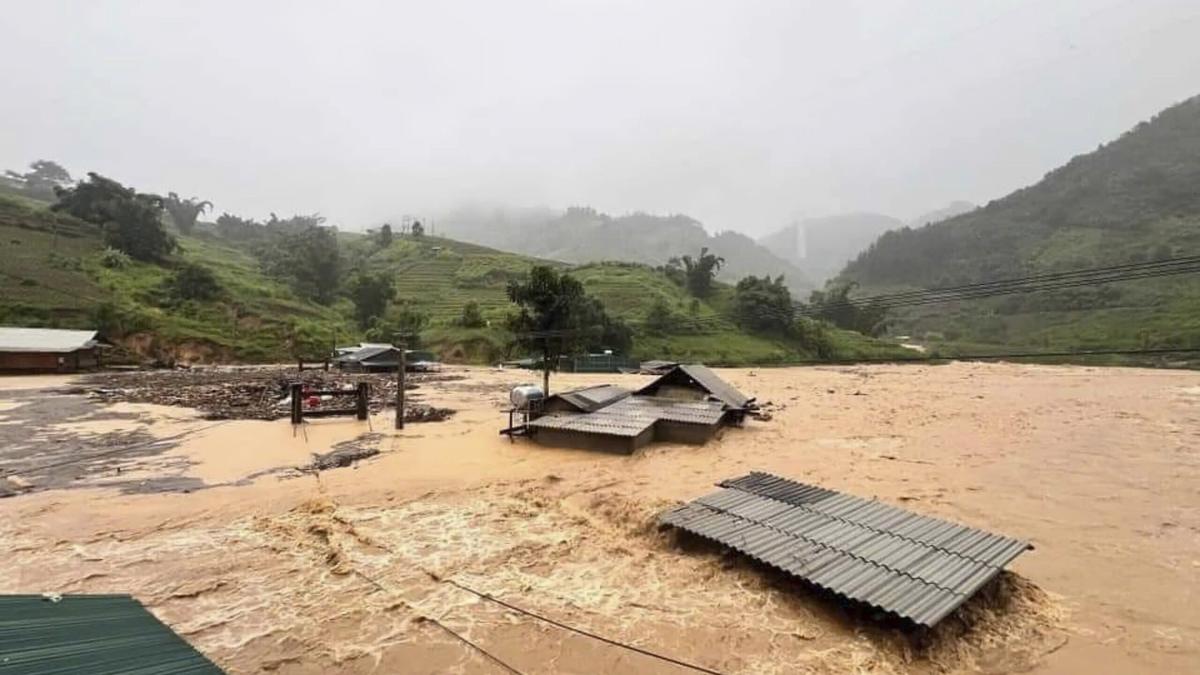Typhoon Yagi, one of the most powerful storms to hit the region in a decade, swept through Vietnam’s northern provinces, leaving a trail of devastation and prompting warnings of continued heavy rain and flooding. Despite weakening into a tropical depression, Yagi’s impact left at least 14 people dead and 176 others injured. This article will delve into the devastating effects of Typhoon Yagi, focusing on the extensive damage caused, the subsequent warnings for ongoing threats, and the potential link to climate change.
Devastating Impact of Typhoon Yagi
Typhoon Yagi’s arrival brought a surge of destructive force, causing widespread damage and leaving a lasting impact on the region. The typhoon’s impact is evidenced by the following key points:
Loss of Life and Injuries
The most poignant consequence of the storm is the loss of human life. At least 14 individuals lost their lives during Typhoon Yagi’s rampage, and an additional 176 people suffered injuries, highlighting the storm’s ferocity. These numbers paint a stark picture of the tragedy that unfolded.
Widespread Power Outages
The storm’s strength resulted in power outages affecting millions of people. Over 3 million residents of northern Vietnam found themselves without electricity. This disruption of essential services had significant implications for daily life, particularly in urban centers reliant on power.
Agricultural Losses
Typhoon Yagi inflicted significant damage to vital agricultural lands, crippling the region’s food production. An estimated 116,192 hectares of land were affected, impacting the growth of rice and fruits. This loss will undoubtedly have a substantial impact on livelihoods and food security in the affected areas.
Disrupted Transportation
The typhoon caused disruptions to travel and transport networks. Hundreds of flights were canceled due to airport closures, causing major disruptions to air travel. The closures of four airports hampered both domestic and international travel, highlighting the severe disruption the storm brought.
Continued Threats and Warnings
Despite weakening, Typhoon Yagi’s impact extends beyond the initial landfall. The meteorological department issued warnings of continued heavy rain in northern and central provinces, further increasing the risk of flooding and landslides. The ongoing threats posed by the storm highlight the need for preparedness and caution.
Heavy Rain and Flooding
The ongoing heavy rain presents a serious risk of flooding, particularly in low-lying areas. The threat of floods is a concern as these regions are more susceptible to inundation from accumulated rainwater.
Flash Floods and Landslides
Flash floods in streams pose another significant hazard. The rapid flow of water in streams due to heavy rain can cause sudden and potentially devastating flooding. The steep slopes of mountainous regions are also vulnerable to landslides, further increasing the threat of the storm’s aftermath.
Cleaning Up and Assessing Damage
The immediate aftermath of Typhoon Yagi saw emergency response teams and local authorities working tirelessly to address the devastation.
Municipal Workers and Emergency Response
Municipal workers in Hanoi mobilized alongside army and police forces to clear fallen debris. Trees, billboards, electricity poles, and rooftops were cleared to ensure safe passage and restore normalcy. The cleanup efforts showcase the coordinated response needed during such events.
Assessing the Damage
Simultaneously, authorities embarked on assessing the damage caused by the typhoon. This assessment is crucial for evaluating the extent of the damage, allocating resources for repairs and reconstruction, and guiding long-term recovery efforts.
A Global Trend: Typhoons and Climate Change
Typhoon Yagi’s strength is consistent with a broader trend of increasing intensity and frequency of storms around the globe, raising concerns about the influence of climate change on weather patterns.
Strengthening Storms Due to Climate Change
The potential link between Typhoon Yagi’s strength and climate change cannot be ignored. Benjamin Horton, director of the Earth Observatory of Singapore, suggests that warmer ocean waters fueled the storm, resulting in increased wind speeds and heavier rainfall.
The Role of Warmer Oceans
Warmer ocean waters provide the energy for storm formation and intensification. Rising global temperatures contribute to the warming of oceans, which, in turn, provides a conducive environment for the development and strengthening of storms like typhoons. This interconnectedness highlights the importance of understanding and addressing climate change.
Takeaway Points
- Typhoon Yagi has significantly impacted Vietnam’s northern provinces, leading to widespread damage, power outages, and agricultural losses.
- The storm claimed at least 14 lives and injured over 176, underlining the tragedy of the event.
- Heavy rainfall persists, raising concerns about ongoing flooding and landslides in vulnerable areas.
- The scale of the storm aligns with the global trend of intensifying weather events, potentially driven by climate change.
- The storm’s impact highlights the importance of preparedness, effective disaster response, and understanding the role of climate change in shaping extreme weather events.




